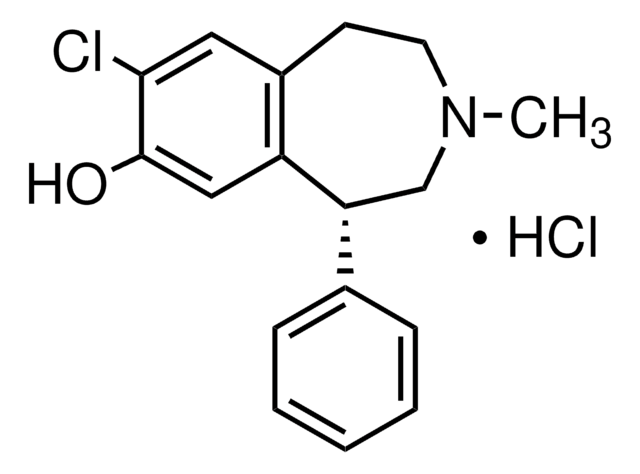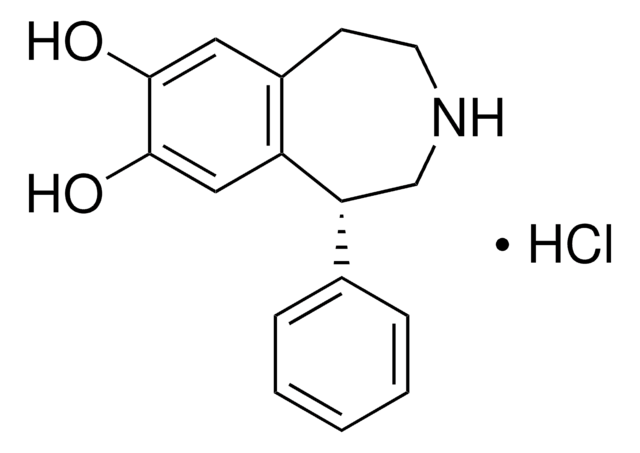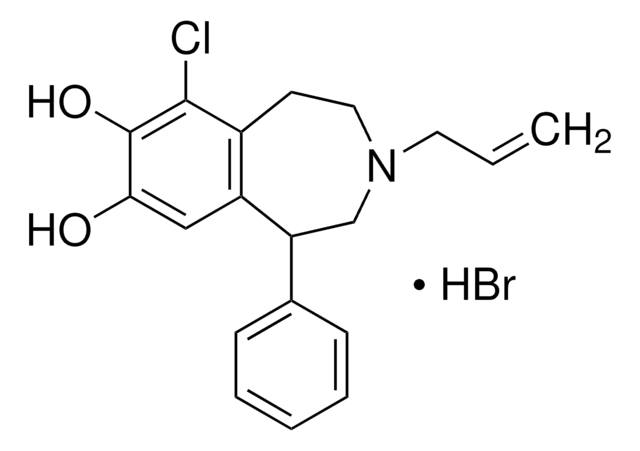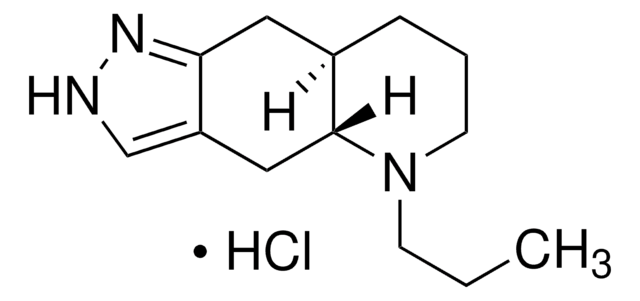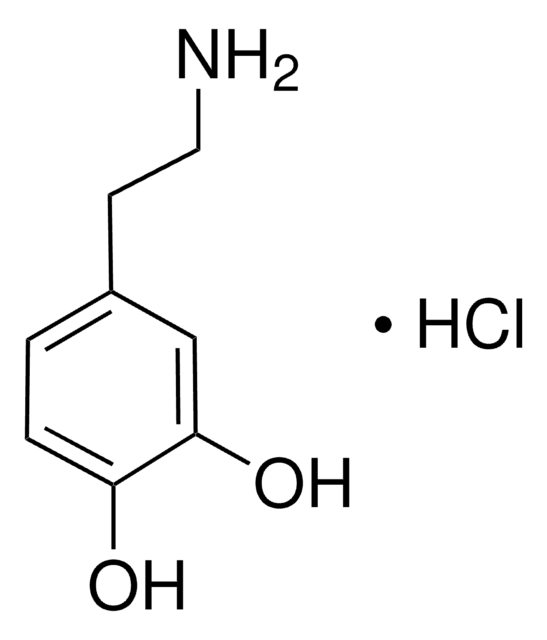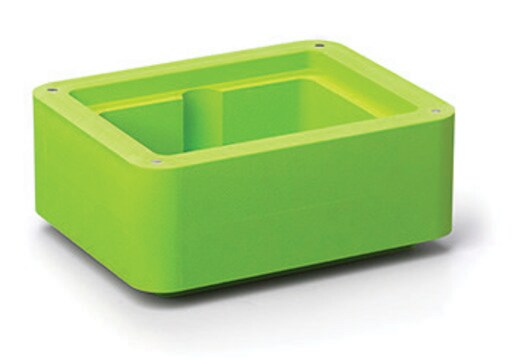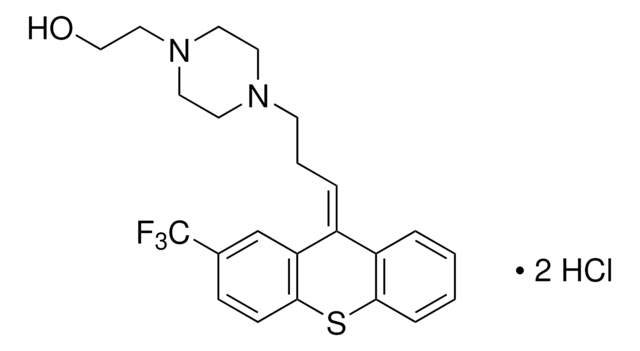D047
(±)-SKF-38393 hydrochloride
crystalline, ≥98% (HPLC)
동의어(들):
(±)-1-Phenyl-2,3,4,5-tetrahydro-(1H)-3-benzazepine-7,8-diol hydrochloride
로그인조직 및 계약 가격 보기
모든 사진(4)
About This Item
실험식(Hill 표기법):
C16H17NO2 · HCl
CAS Number:
Molecular Weight:
291.77
MDL number:
UNSPSC 코드:
12352200
PubChem Substance ID:
NACRES:
NA.77
추천 제품
Quality Level
분석
≥98% (HPLC)
양식
crystalline
저장 조건
desiccated
protect from light
색상
white
solubility
H2O: >5 mg/mL
aqueous base: soluble (unstable)
SMILES string
Cl.Oc1cc2CCNCC(c3ccccc3)c2cc1O
InChI
1S/C16H17NO2.ClH/c18-15-8-12-6-7-17-10-14(13(12)9-16(15)19)11-4-2-1-3-5-11;/h1-5,8-9,14,17-19H,6-7,10H2;1H
InChI key
YEWHJCLOUYPAOH-UHFFFAOYSA-N
유전자 정보
human ... DRD1(1812)
유사한 제품을 찾으십니까? 방문 제품 비교 안내
애플리케이션
(±)-SKF-38393 hydrochloride has been used as a selective D1 receptor agonist as a part of dopaminergic treatment. It has also been used to study its effect on prolactin in male baboons.
생화학적/생리학적 작용
(±)-SKF-38393 is a D1 dopamine receptor agonist. It is known to promote the production of glutamate in the hippocampus.
주의사항
This material is hygroscopic. Air-sensitive. Light-sensitive.
신호어
Warning
유해 및 위험 성명서
Hazard Classifications
Eye Irrit. 2 - Skin Irrit. 2 - STOT SE 3
표적 기관
Respiratory system
Storage Class Code
11 - Combustible Solids
WGK
WGK 3
Flash Point (°F)
Not applicable
Flash Point (°C)
Not applicable
개인 보호 장비
dust mask type N95 (US), Eyeshields, Gloves
Stimulation of dopamine D1 receptor improves learning capacity in cooperating cleaner fish
Messias JPM, et al.
Proc. Royal Soc. Lond. B., 283(1823), 20152272-20152272 (2016)
Prolactin and fMRI response to SKF38393 in the baboon
Miller B, et al.
PeerJ, 1(5), e195-e195 (2013)
Dopamine disruption increases cleanerfish cooperative investment in novel client partners
Soares MC, et al.
Royal Society open science, 4(5), 160609-160609 (2017)
The D1 dopamine receptor agonist SKF-38393 stimulates the release of glutamate in the hippocampus
Bouron A and Reuter H
Neuroscience, 94(4), 1063-1070 (1999)
David Kabelik et al.
Neuropharmacology, 58(1), 117-125 (2009-06-23)
Recent experiments demonstrate that aggressive competition for potential mates involves different neural mechanisms than does territorial, resident-intruder aggression. However, despite the obvious importance of mate competition aggression, we know little about its regulation. Immediate early gene experiments show that in
자사의 과학자팀은 생명 과학, 재료 과학, 화학 합성, 크로마토그래피, 분석 및 기타 많은 영역을 포함한 모든 과학 분야에 경험이 있습니다..
고객지원팀으로 연락바랍니다.